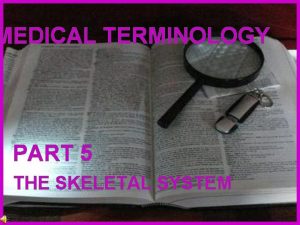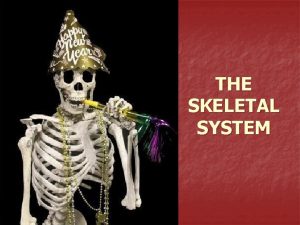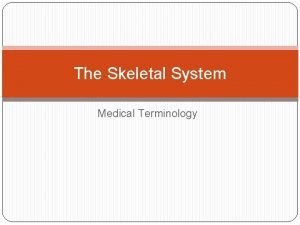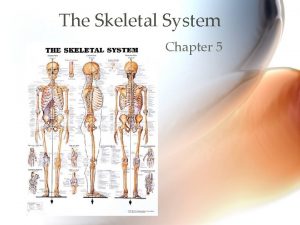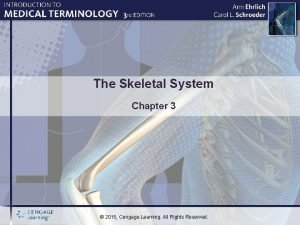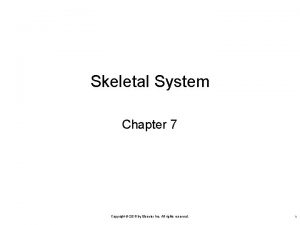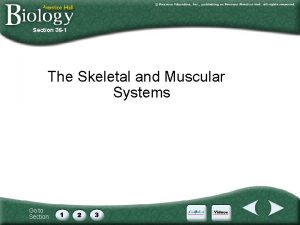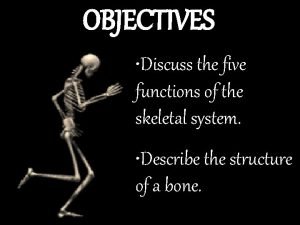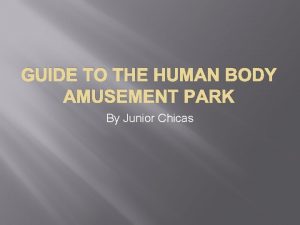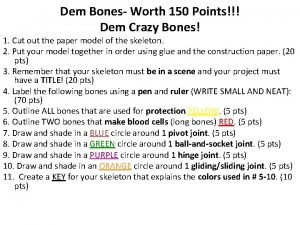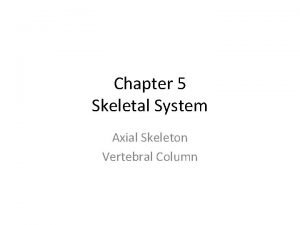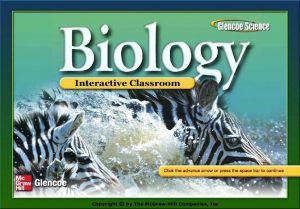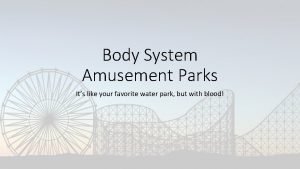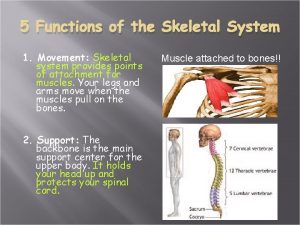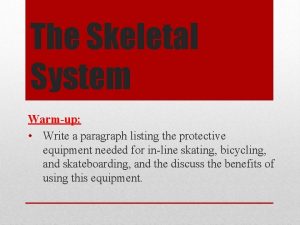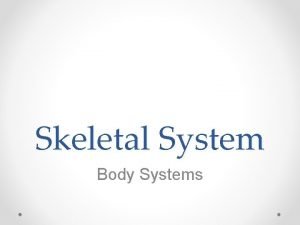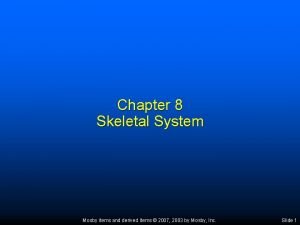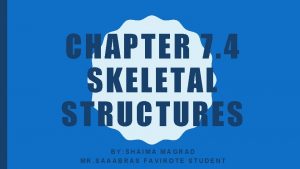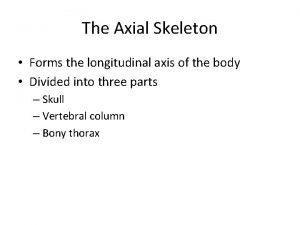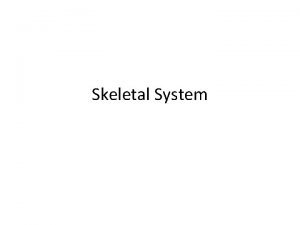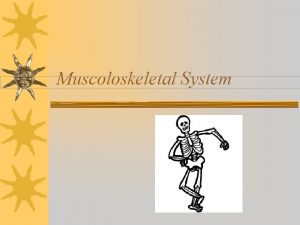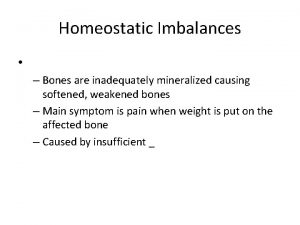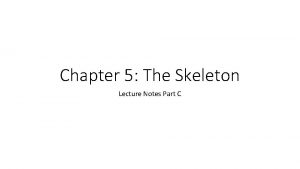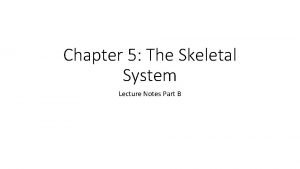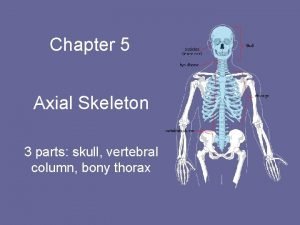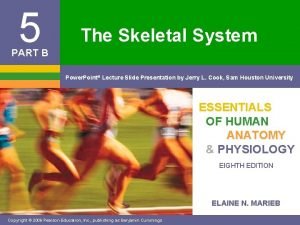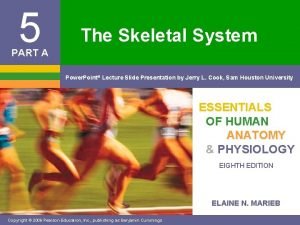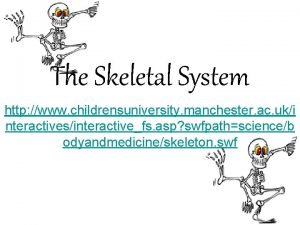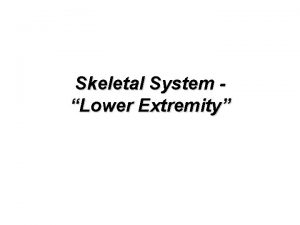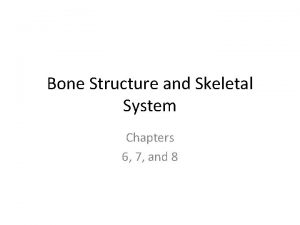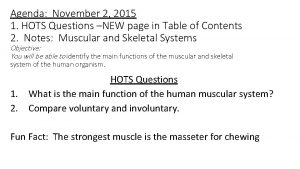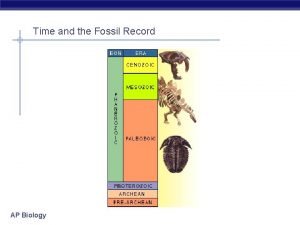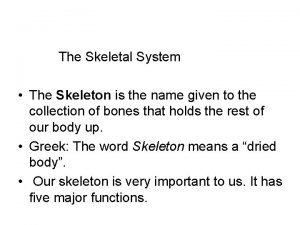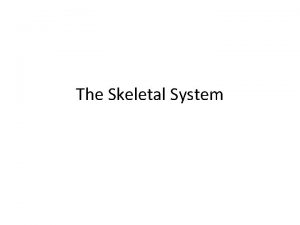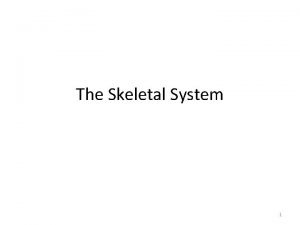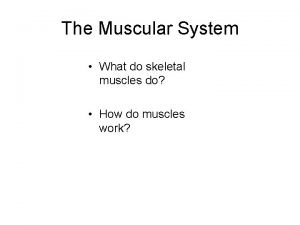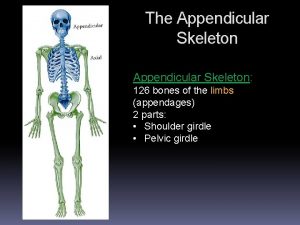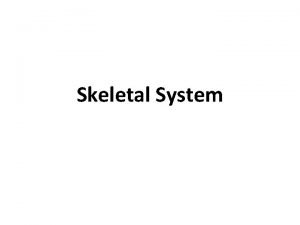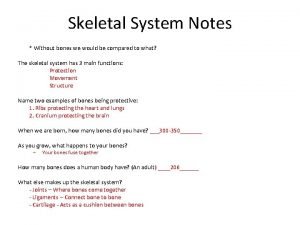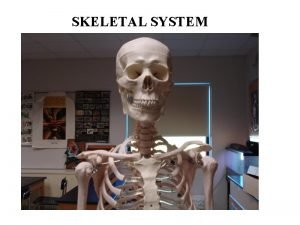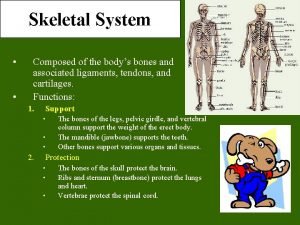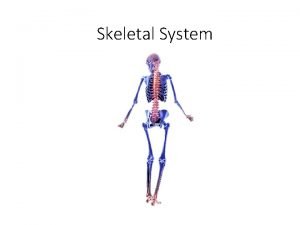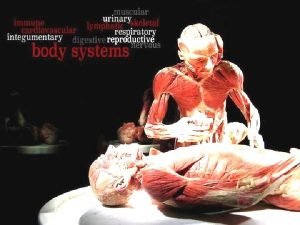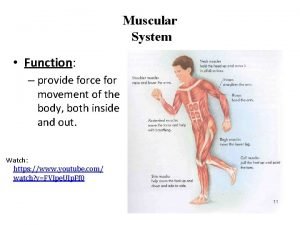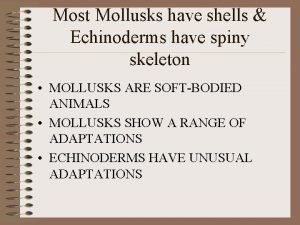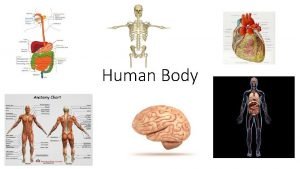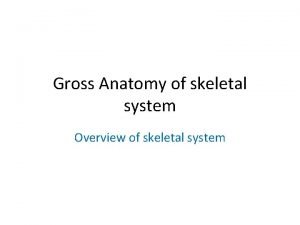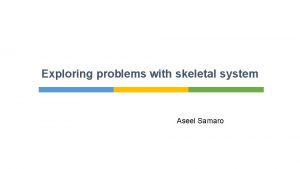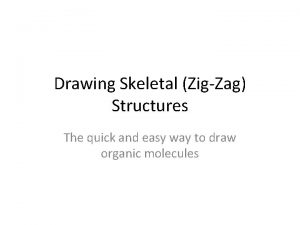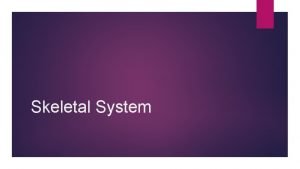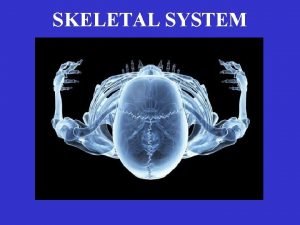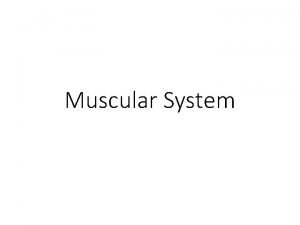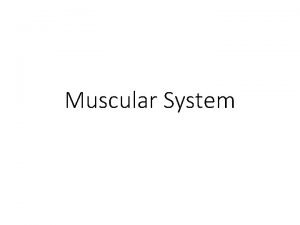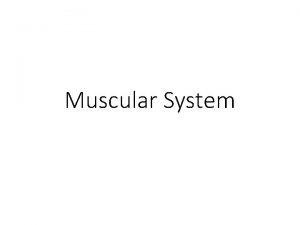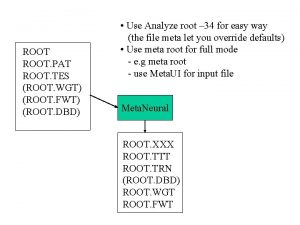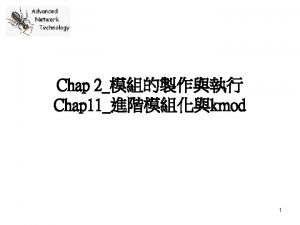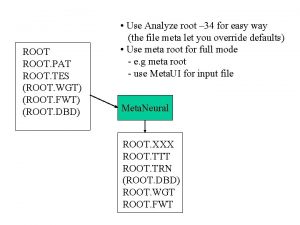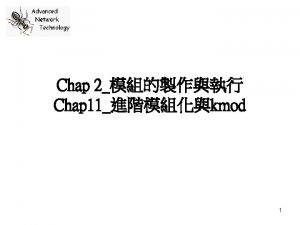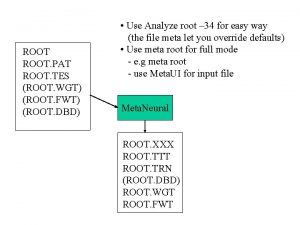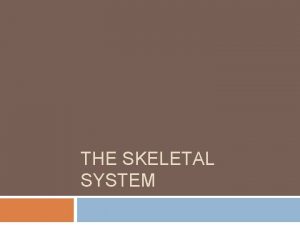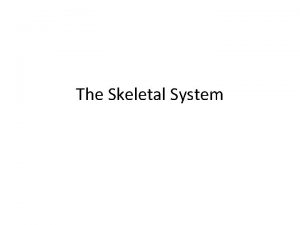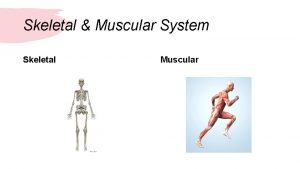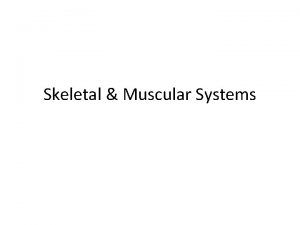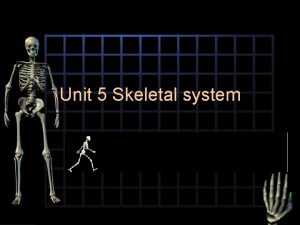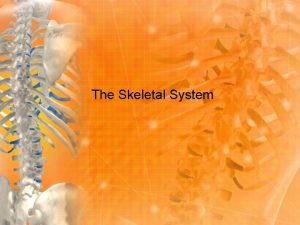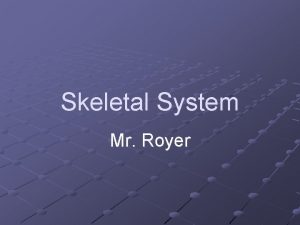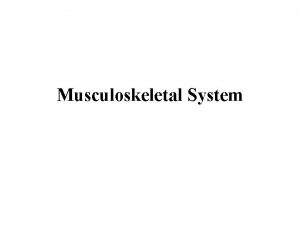Write Unit 07 Skeletal System Write Latin Root






























































- Slides: 62

Write Unit 07 Skeletal System

Write. Latin Root Word Definition Peri- Around Osteo Bone Physis Growth Dia- Through Medulla Pith or marrow -blast Build -clast destroy Articular Small connecting part Condyle Rounded process Crest Ridge-like projection Foramen Opening in a bone (hole) Fossa Passageway Process Prominent projection Trochanter Relatively large process Tubercle Small, knoblike process

Write 7. 1 Introduction Structure and Function of the skeletal system

Listen

Write Skeletal System Organs Functions • Bones • Joints • Provide points of attachment for muscles • Protect and support • House blood producing cells • Store inorganic salts

Write 7. 2. 1 Bone Structure Axial and Appendicular

Listen

Listen Axial Skeleton Appendicular Skeleton

Listen

Color on your handout Axial Skeleton Appendicular Skeleton

Write 7. 2. 2 Bone Structure Bone Overview

Write 7. 2. 3 Bone Structure 4 Types of Bone

Listen

Listen

Listen

Listen

Listen

Write Types of Bones • Long Bones • Longer than they are wide • Ex. Femur, Humerus • Short Bones • About as long as they are wide • Carpals and tarsals • Irregular Bones • Oddly shaped; usually have foramen(holes) for nerves • Vertebrae, sacrum • Flat Bones • Flat and used mostly for protection • Skull, sternum

Listen Long Short Flat Irregular Humerus Carpals Cranium Vertebrae Radius Tarsals Sternum Sacrum Ulna Patella Ribs Metacarpals Scapula Femur Ilium Tibia Ischium Fibula Metatarsals Phalanges

Directions • Get a text book • Go to page 128 and read 7. 2 Bone structure • Use your text book to fill out the Long Bone Structure handout • On the back of the skeleton I gave you

Cranium Mandible Cervical Vertebrae Thoracic Vertebrae Lumbar Vertebrae Ilium Sacrum Ischium Clavicle Scapula Sternum Ribs Humerus Radius Ulna Carpals Metacarpals Phalanges Femur Patella Tibia Fibula Calcaneus Tarsals Metatarsals Phalanges

Write Bone Tissue • Matrix • Collagen Fibers • Hydroxyapatite (Mineral) • • • Cells calcium phosphate calcium carbonate calcium fluoride calcium hydroxide and citrate. • Osteocytes • Osteoblasts • Osteoclasts “Super. That’s how milk makes you feel. The calcium helps your bones grow strong, so even if you’re not from Krypton™ you can have bones of steel”

Listen

Write Two Types of Bone Compact Spongy • Weight Bearing • Support • Made up of Osteons • Allows for infiltration of blood vessels and nerves • Red Marrow Creation

Write Central Canal Lamellae Osteocytes Canaliculi *little canals Lacunae Osteon

y g n o Sp one B ct a p m Co one B Osteon Central Canal Periosteum Nerve Central Canal Blood Vessel Perforating Canaliculi Osteocyte Lacunae

Bone Growth Write Epiphyseal Plate Secondary Ossification Center Primary Ossification Center Cartilage 1. Periosteum begins to form 2. Cartilage breaks down and spongy bone is built 3. Bone is hooked up to blood supply 4. Primary and secondary ossification centers form spongy and compact bone 5. Primary and secondary ossification centers continue to grow until they’ve turned the epiphyseal plate into the epiphyseal line

Listen

Write Bone Cell Types • Osteoblasts • Lay down bone matrix • Osteoclasts • Destroy bone matrix • Osteocytes • Manage osteoblasts and osteoclasts

Write Bone Remodeling • Resorption • Osteoclasts dissolve bones • Ossification • Osteoblasts build new bone

Assignment Osteoporosis Article • http: //anatomyandphysiologyi. com/osteoporosis/ • http: //www. niams. nih. gov/health_info/bone/Bone _Health/Exercise/default. asp • Assignment: • In your own words, describe what happens to people who have osteoporosis (make sure to use the previously covered terminology). You should also cover who is at risk, symptoms and ways you can treat/prevent it.

Watch Can we Grow Bones? • http: //ed. ted. com/lessons/how-to-grow-a-bonenina-tandon

Daily Warm Up 1. What is the periosteum? 2. Which part of the long bone is made up of compact bone? 3. Your bones start out as ______ 4. What is the epiphyseal line?

Daily Warm Up 1. What is the periosteum? Tissue that surrounds the bone 2. Which part of the long bone is made up of compact bone? Diaphysis Cartilage 3. Your bones start out as ______ 4. What is the epiphyseal line? Remnant of the epiphyseal plate, a slice of cartilage between the primary and secondary ossification centers that was converted into bone.

Bone Packet Reading • 7. 7 (142) • Label the bones in your packet • Vertebral Column • 7. 8 (147) • Study the bones in your packet • Ribs • 7. 10 (148) • • Humerus Radius Ulna Carpals • 7. 11 (151) • Pelvis • 7. 12 (154) • Tibia • Fibula • Tarsals • Be prepared for a quiz by the end of class

Straight Line To Pinky 1. 2. 1. 2. 3. 4. 5. 6. 7. 8. Scaphoid Lunate Triquetrium 3. Pisiform Hamate Capitate Trapezoid Trapezium (by the thumb) L S T P H C TT Here Comes The Thumb

Daily Warm Up 1. What are three cells found in bone tissue and what do they do? 2. What is an osteon? 3. The tissue that connects bone to bone is called? 4. The tissue that connects muscle to bone is called? 5. Describe how the ulna attaches onto the Humerus.

Daily Warm Up 1. What are three cells found in bone tissue and what do they do? Osteocyte: Manager Osteoblast: Builder Osteoclasts: Destroyer 2. What is an osteon? Unit that builds up compact bone 3. The tissue that connects bone to bone is called? Ligament 4. The tissue that connects muscle to bone is called? Tendon 5. Describe how the ulna attaches onto the Humerus. The olecranon and coronoid processes of the ulna hook into the olecranon and coronoid fossa of the humerus

Daily Warm Up Tarsals Word Bank Triquetrium Lunate Pisiform Scaphoid Calcaneus Talus 1. 2. 3. Cuboid 4. Lateral 5. Cuneiform Intermediate 6. Cuneiform 7. Medial Navicular Cuneiform Calcaneus Cuboid Intermediate Cuneiform Lateral Cuneiform Medical Cuneiform Navicular Talus Carpals Word Bank Capitate Hamate Lunate Pisiform Scaphoid Trapezium Trapezoid Triquetrium Hamate Capitate 10 9. 8. 11. 12. 13. 14. 15. Trapezium Trapezoid

Body Movements • Adduction: Movement toward the midline • Abduction: Movement away from the midline • Flexion: Decreases the angle between two body parts • Extension: Increases the angle between two body parts – usually to 180 degrees • Hyper Extension: Increases the angle between two body parts – usually past 180 degrees • Dorsiflexion • Bends foot towards the ankle • Plantar flexion • Bends foot towards the ground

Body Movements • Rotation • Medial Rotation: rotation towards the midline • Lateral rotation: rotation away from the midline • Supination: palm up • Pronation: Palm down

Body Movements • Protraction: Movement of body (jaw) anteriorly • Retraction: Movement of the body (jaw) posteriorly • Eversion: turning sole outward; weight on inner edge of the foot • Inversion: turning the sole inward Elevation: movement upward, as in shrugging the shoulders Depression: movement downward

Write Articulations/Joints • Articulation: Joint

Write Types of joints 1. Fibrous joints 1. 2. 3. Sutures Syndesmoses Gomphosis 2. Cartilaginous joints 3. Synovial joints 1. 2. 3. 4. 5. 6. Plane (gliding) Hinge Pivot Condyloid Saddle Ball and socket

Listen Human Anatomy and Physiology, 7 e by Elaine Marieb & Katja Hoehn Sutures Copyright © 2007 Pearson Education, Inc. , publishing as Benjamin Cummings.

Listen Syndesmosis


Write 1. Fibrous joints • Characteristics • Joined by fibrous tissue. • No joint cavity. • Seldom movement. • Types • Sutures • Interlocked by connective tissues and irregular edges between bones (skull). • Syndesmoses • Articulated bones connected by ligaments and bones that do not interlock. (Fibula and Tibia) • Gomphosis: tooth secured by periodontal ligament.

Cartilaginous joints Synchondroses Sternum (manubrium) Epiphyseal plate (hyaline cartilage) Joint between first rib and sternum (immovable) (a) (b) Fibrocartilaginous intervertebral disc Body of vertebra (c) Symphyses Human Anatomy and Physiology, 7 e by Elaine Marieb & Katja Hoehn Copyright © 2007 Pearson Education, Inc. , publishing as Benjamin Cummings.

2. Cartilaginous joints • Characteristic • Articulating bone ends are connected by a plate of cartilage.

General structure of a synovial joint Periosteum Ligament Joint cavity (contains synovial fluid) Articular (hyaline) cartilage Fibrous capsule Synovial membrane Articular capsule (b) (a) Human Anatomy and Physiology, 7 e by Elaine Marieb & Katja Hoehn Copyright © 2007 Pearson Education, Inc. , publishing as Benjamin Cummings.

3. Synovial joints • Characteristics • Synovial Fluid

Friction-reducing structures: Bursae and tendon sheaths Coracoacromial ligament Subacromial bursa Acromion of scapula Coracoacromial ligament Subacromial bursa Fibrous articular capsule Cavity in bursa containing Glenoid cavity synovial fluid containing synovial fluid Hyaline cartilage Tendon sheath (b) Synovial membrane Fibrous capsule Tendon of long head of biceps brachii muscle Humerus (a) Human Anatomy and Physiology, 7 e by Elaine Marieb & Katja Hoehn Copyright © 2007 Pearson Education, Inc. , publishing as Benjamin Cummings.

Types of Synovial Joints • Types of synovial joints • Hinge • Elbow • Pivot • forearm • Ball and socket • Shoulder and hip • Ellipsoid • wrist • Saddle • Thumb • Plane • Carpals and Tarsals https: //www. youtube. com/watch? v=0 c. Yal_hitz 4








Unit 07 Review • Axial and Appendicular Skeleton • Bone Types • Long, Short Flat, and Irregular • Parts of a Long Bone • Osteon Anatomy and Function • Bone Growth • Osteocytes, Osteoblasts, Osteoclasts, Resorption and Ossification • Three Types of Joints • Know movement and where to find them • Difference between tendons and ligaments • Gross Anatomy of the Skeleton • Body Movements
 Burs skeletal word
Burs skeletal word 5 main functions of the skeleton
5 main functions of the skeleton Medical terminology skeletal system
Medical terminology skeletal system Chapter 5 the skeletal system
Chapter 5 the skeletal system Chapter three skeletal system answer key
Chapter three skeletal system answer key Chapter 7:4 skeletal system
Chapter 7:4 skeletal system Chapter 5 the skeletal system
Chapter 5 the skeletal system Section 36-1 the skeletal system
Section 36-1 the skeletal system What are the five functions of the skeletal system?
What are the five functions of the skeletal system? Park of the body
Park of the body Skeletal system dem crazy bones
Skeletal system dem crazy bones Chapter 6 the skeletal system answer key
Chapter 6 the skeletal system answer key Lamina bone
Lamina bone Chapter 32 section 2 the skeletal system answer key
Chapter 32 section 2 the skeletal system answer key Body system amusement park project
Body system amusement park project 5 functions of the human skeleton
5 functions of the human skeleton Navigating the body skeletal system #2
Navigating the body skeletal system #2 How to care for the skeletal system
How to care for the skeletal system Crash course axial skeleton
Crash course axial skeleton Whats the main function of the skeletal system
Whats the main function of the skeletal system Chapter 8 skeletal system
Chapter 8 skeletal system 7:4 skeletal system
7:4 skeletal system Chapter 5 the skeletal system figure 5-10
Chapter 5 the skeletal system figure 5-10 Skeletal system
Skeletal system Figure 5-13 is a diagram of the articulated skeleton
Figure 5-13 is a diagram of the articulated skeleton Skeletal system bell ringer
Skeletal system bell ringer Appendicular vs axial skeleton
Appendicular vs axial skeleton Muscoloskeletal system
Muscoloskeletal system Homeostatic imbalances of bones and joints
Homeostatic imbalances of bones and joints Typical vertebra superior view
Typical vertebra superior view Hyoid bone lecture
Hyoid bone lecture Chapter 5 the skeletal system
Chapter 5 the skeletal system Receive
Receive Chapter 3 the skeletal system labeling exercises
Chapter 3 the skeletal system labeling exercises Chapter 5 the skeletal system figure 5-13
Chapter 5 the skeletal system figure 5-13 Tissue examples
Tissue examples Childrens university of manchester
Childrens university of manchester Skeletal system
Skeletal system Where is bone marrow located
Where is bone marrow located Somatic vs autonomic nervous system
Somatic vs autonomic nervous system Chapter 8 skeletal system
Chapter 8 skeletal system Learning objectives of skeletal system
Learning objectives of skeletal system Where is the long bone located
Where is the long bone located Hots questions on skeletal system
Hots questions on skeletal system Fossil record definition biology
Fossil record definition biology Skeletal system
Skeletal system Skeletal system
Skeletal system Introduction of skeletal system
Introduction of skeletal system Bone anatomy
Bone anatomy Skeletal and muscular system
Skeletal and muscular system Appendicular skeleton
Appendicular skeleton Skeletal system
Skeletal system Without bones we would be
Without bones we would be Skull labeled
Skull labeled 5 function of skeletal system
5 function of skeletal system Skeletal system
Skeletal system Human body foldable
Human body foldable Skeletal system
Skeletal system Mollusca skeletal system
Mollusca skeletal system How much does the skeletal system weigh
How much does the skeletal system weigh Sally left the party to take cathy home
Sally left the party to take cathy home Skeletal system
Skeletal system Zigzag rule drawing
Zigzag rule drawing
